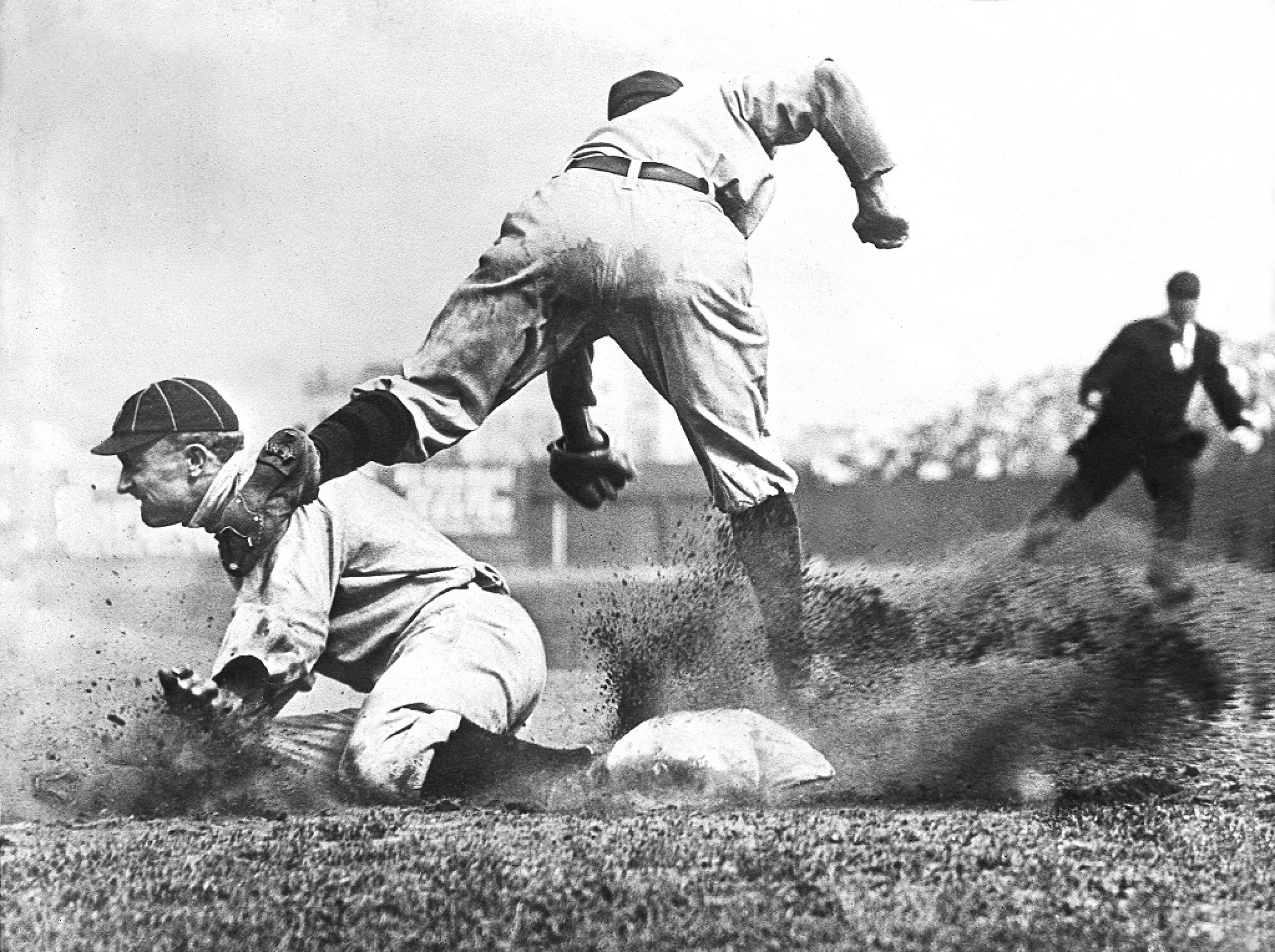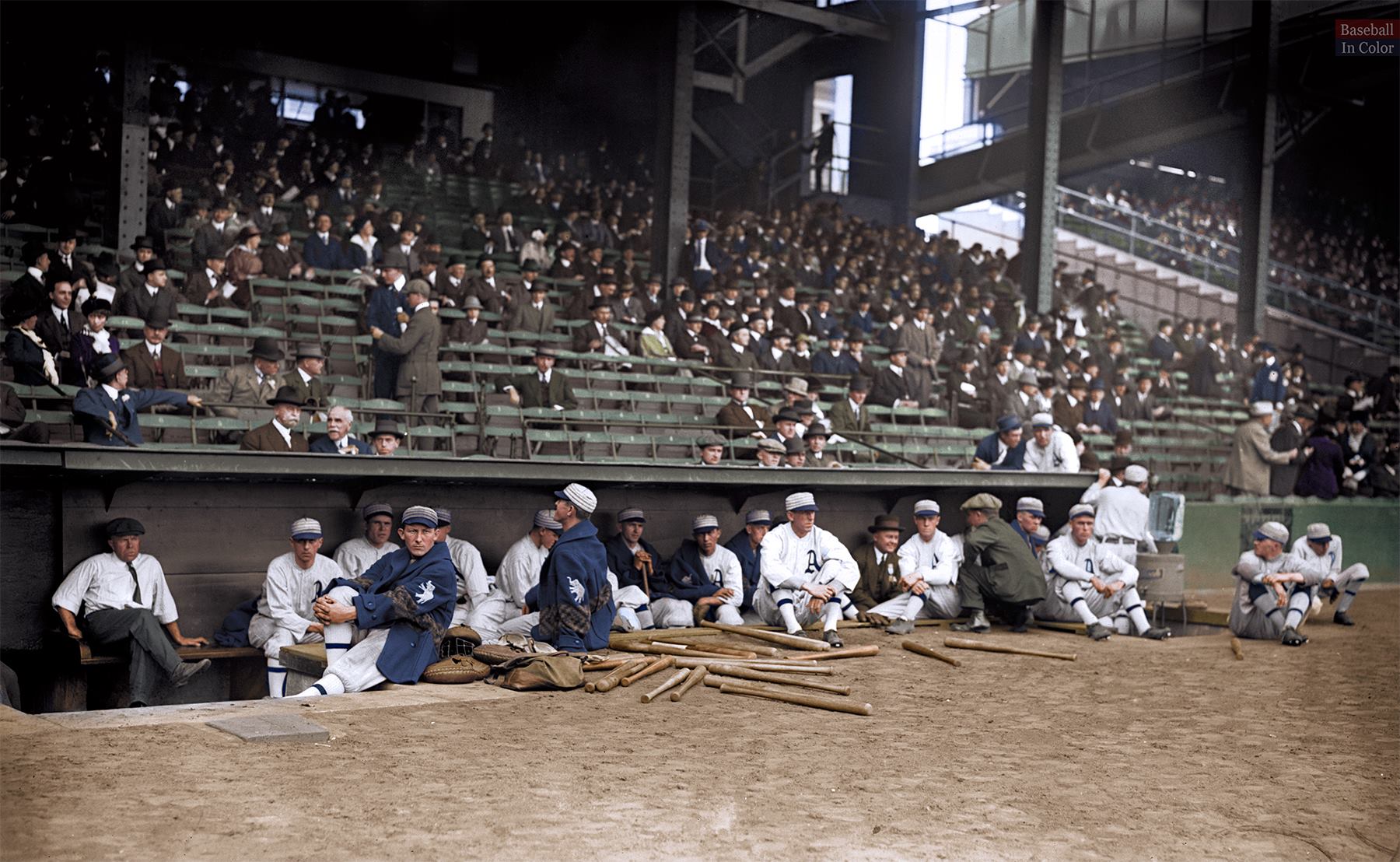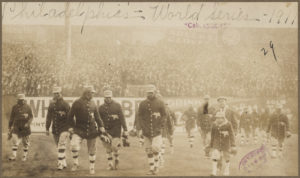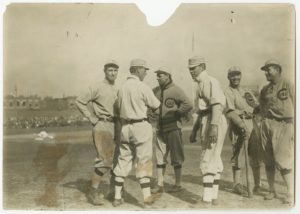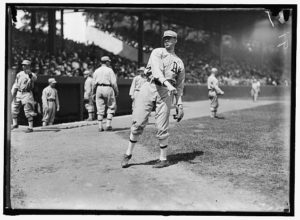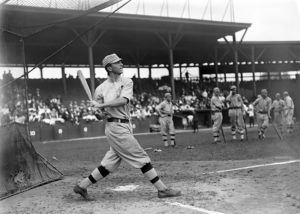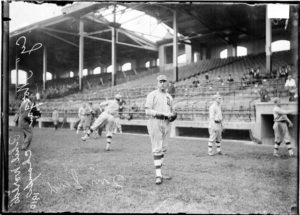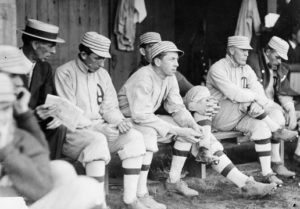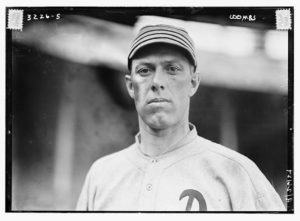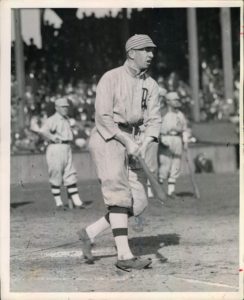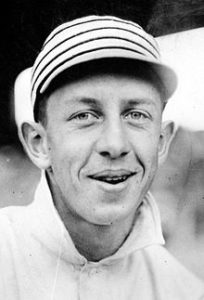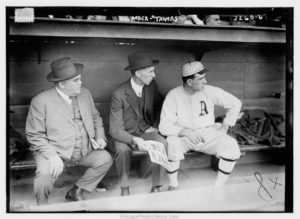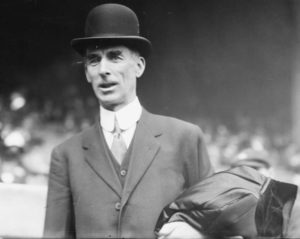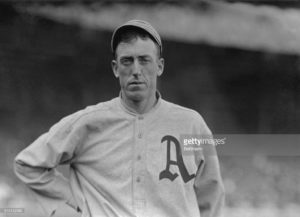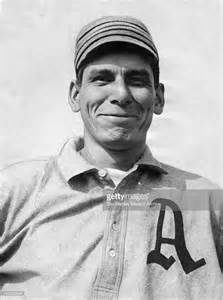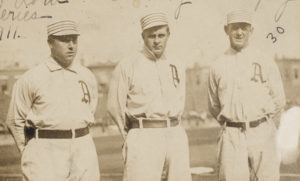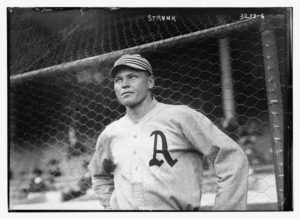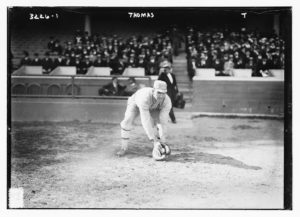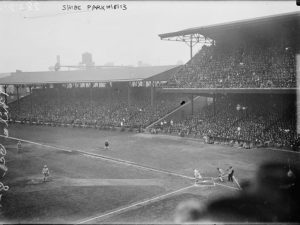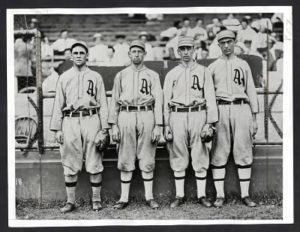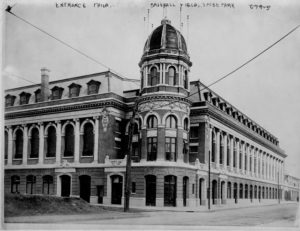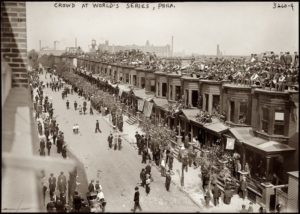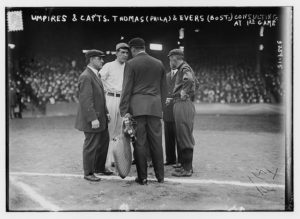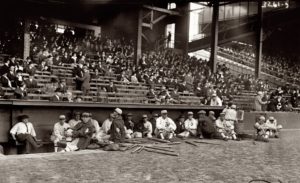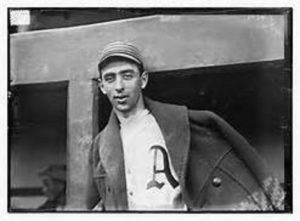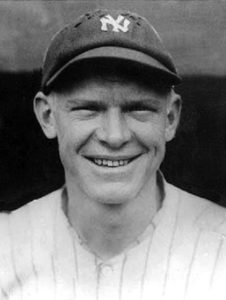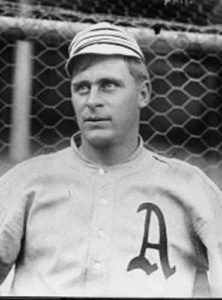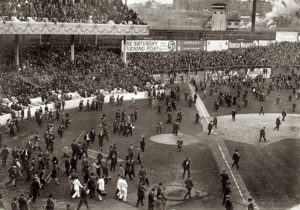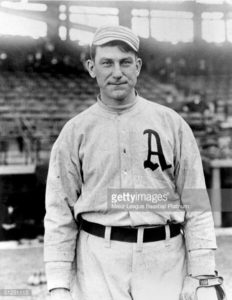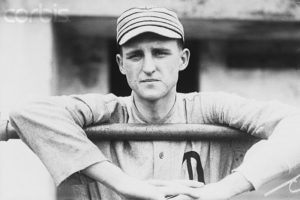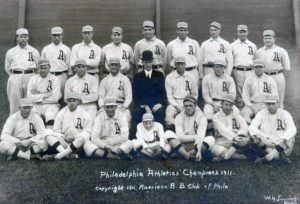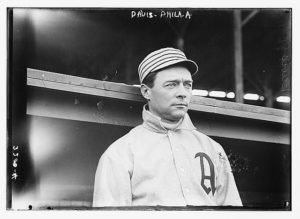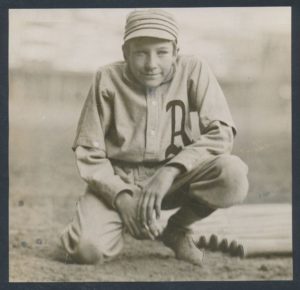Baseball History Comes Alive Now Ranked #2 by Feedspot Among All Internet Baseball History Websites and Blogs!
Guest Submissions from Our Readers Always Welcome!
Subscribe to my blog for automatic updates
Philadelphia Athletics Photo Gallery
Click on any image below to start Photo Gallery:
Were the 1916 Philadelphia Athletics the Worst Team Ever?
In a recent article about the 1916 Philadelphia Athletics, “Remembering the Pathetics,” the author makes the case that the 1916 Athletics were perhaps the worst team in the post-1900 modern era of baseball, and may have even been the worst team in the history of major U.S. pro sports!
In the featured photo, colorized by Mark Truelove, we see A’s players in the dugout probably from their pennant-winning year of 1914, a year before the 1916 fire sale began. I can make out A’s players Jack Barry, Eddie Murphy, Jack Lapp, Stuffy McInnes, Bob Shawkey, Frank Baker, Boardwalk Brown, Eddie Plank, and Bris Lord, plus trainer Doc Martin and mascot Eddie Van Zelst.
It was a sad demise to a great team. The A’s had won pennants in 1910, 1911, 1913, and 1914, with World Series championships in ’10, ’11, and ‘13. Their vaunted $1000, 000 infield of Frank “Home Run” Baker, Jack Barry, Eddie Collins, and Stuffy McInnis became the stuff of legends.
But after the heavily-favored A’s lost the 1914 World Series to the “Miracle” Braves; and amid competition from the newly-formed Federal League, the fire sale began. Owner Connie Mack proclaimed “It’s time to embrace a youth movement,” reassuring the fans and the media that “the team was rebuilding for the future. Any short term pain would be to the long-term benefit of the franchise.”
The 1915 team finished last with a record of 43-109…and things went downhill from there. According to author Wertheim:
“By mid-season in 1915, after Barry and Collins had been sold off to the Red Sox and White Sox respectively, the running joke was that Mack now had a $10 infield!”
In addition to Barry and Collins, by the start of the 1916 season gone from the team’s glory years were star players Frank Baker, Eddie Plank, Harry Davis, Chief Bender, Herb Pennock, Danny Murphy, Eddie Murphy, Jack Coombs, and Bob Shawkey. Starting catcher Wally Schang broke his jaw in July and was gone for the rest of the season. In perhaps the worst omen of all, the A’s beloved batboy and “good-luck charm,” Eddie Van Zelst, passed away before the start of the season.
Just how bad was this 1916 team? Well, consider all this:
- The A’s went 36-117 (.235, 54.5 games behind), for the lowest winning percentage in modern major league history (The Cleveland Spiders had gone 20-134 in 1899, but that’s a story for another day).
- The A’s finished 40 games behind the next-worst team, the Washington Senators.
- One of the A’s shortstops, Whitey Witt, recruited from a Universalist seminary, committed 78 errors, tops on a team that committed 314 errors, more than two each game.
- Rookie third baseman Charlie Pick, replacing the great Frank “Home Run” Baker, committed 42 errors at the hot corner.
- The A’s had two pitchers who combined for a 2-36 record.
- In one game against the Tigers, the A’s walked 18 batters. Over the next three days their pitchers walked 11, 10, and 10 batters, respectively.
- By May the A’s were 4-10. Then things got really ugly. There were losing streaks of 11, 12, and 20 games. In July the team went 2-28.
- The A’s had eight pitchers on the roster who lost games and recorded no wins.
After the fire sale, the A’s lingered on with nine straight second division finishes, including six straight years in last place (1916-21). It wasn’t until 1925 when Connie Mack started putting the pieces together of another dynasty. The great A’s teams of the mid-to-late 1920s featured stars like Jimmie Foxx, Mickey Cochrane, Al Simmons, Lefty Grove, Waite Hoyt, and Rube Walberg. They won three consecutive pennants (1929-31), and World Series championships in ’29 and ’30.
And the fate of that team? You guessed it…another fire sale by Connie Mack and years again mired in the second division. Through it all, Mack survived at the managerial helm until 1950. I guess it helps if you own the team!
-Gary Livacari
Photo Credits: Mark Trulove, “Baseball in Color”
Information: Excerpts edited from June 6, 2016 Sports Illustrated article, “Remembering the Pathetics,” by L. Jon Wertheim
